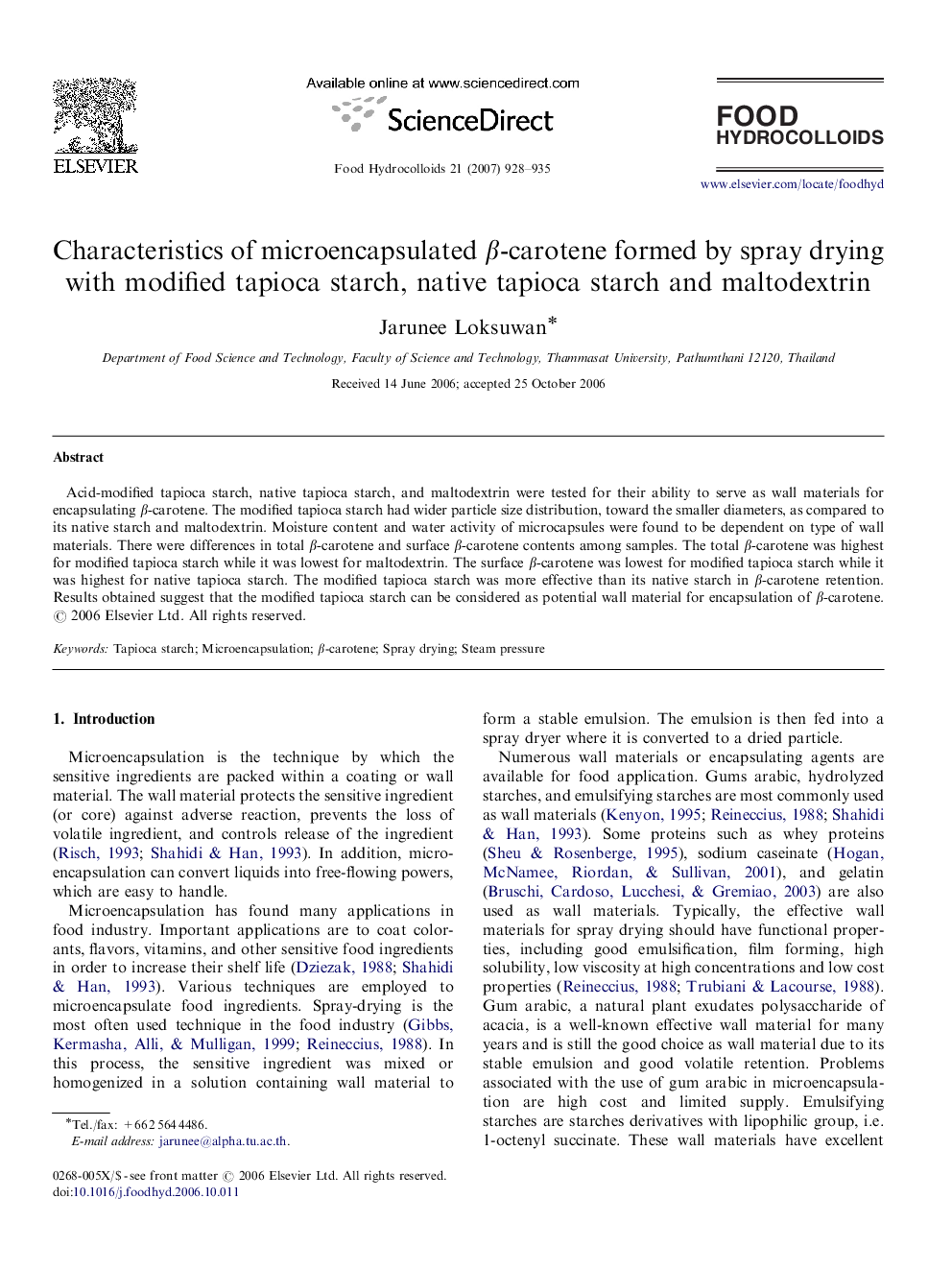| Article ID | Journal | Published Year | Pages | File Type |
|---|---|---|---|---|
| 605954 | Food Hydrocolloids | 2007 | 8 Pages |
Acid-modified tapioca starch, native tapioca starch, and maltodextrin were tested for their ability to serve as wall materials for encapsulating β-carotene. The modified tapioca starch had wider particle size distribution, toward the smaller diameters, as compared to its native starch and maltodextrin. Moisture content and water activity of microcapsules were found to be dependent on type of wall materials. There were differences in total β-carotene and surface β-carotene contents among samples. The total β-carotene was highest for modified tapioca starch while it was lowest for maltodextrin. The surface β-carotene was lowest for modified tapioca starch while it was highest for native tapioca starch. The modified tapioca starch was more effective than its native starch in β-carotene retention. Results obtained suggest that the modified tapioca starch can be considered as potential wall material for encapsulation of β-carotene.
